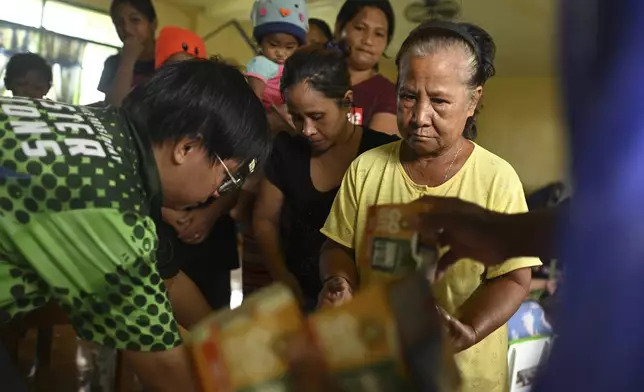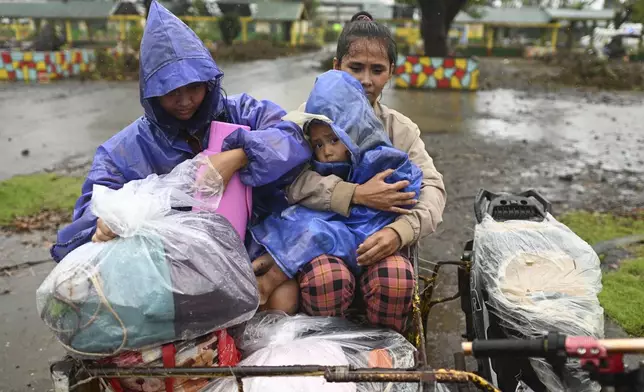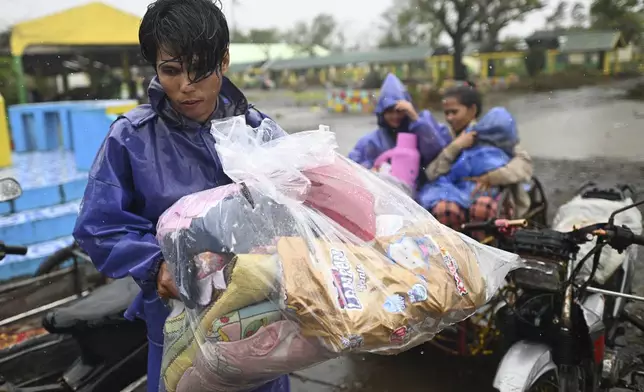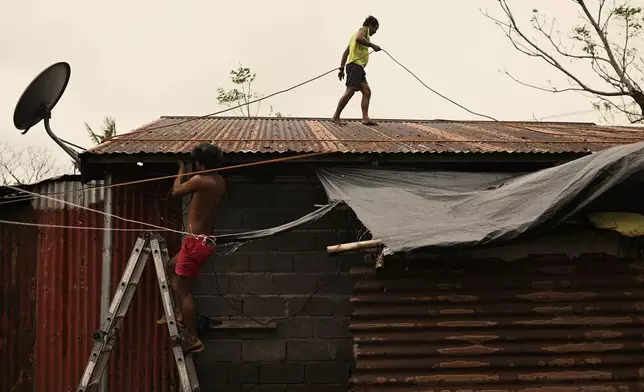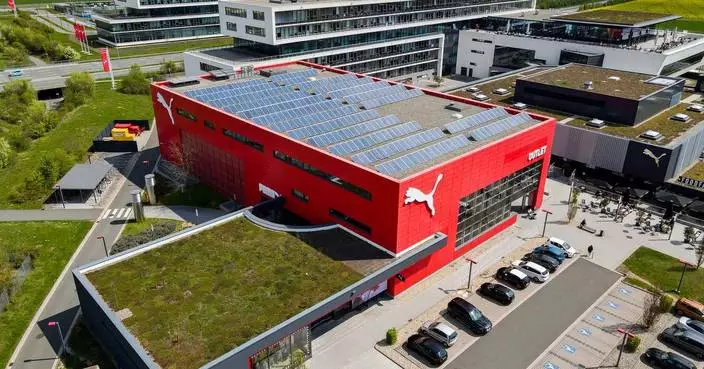MANILA, Philippines (AP) — The fifth major storm in three weeks slammed into the northeastern Philippines on Thursday, prompting more largescale evacuations and a United Nations call for emergency funds to help the government address the plight of hard-hit rural villagers.
Typhoon Usagi had sustained winds of up to 175 kilometers (109 miles) per hour and gusts of up to 240 kph (149 mph) when it slammed into the coastal town of Baggao in Cagayan province at the northern tip of Luzon, the country’s most populous agricultural region. Locally named Ofel, the typhoon was barreling northwestward and was forecast to blow away overnight toward southern Taiwan.
Click to Gallery
Residents reinforce the roof of their house in Santa Ana, Cagayan Province, northern Philippines as they anticipate Typhoon Usagi to hit their area Thursday, Nov. 14, 2024. (AP Photo/Noel Celis)
A resident reinforces the roof of their house in Santa Ana, Cagayan Province, northern Philippines as they anticipate Typhoon Usagi to hit their area Thursday, Nov. 14, 2024. (AP Photo/Noel Celis)
Residents receive relief goods at a school used as an evacuation center in Santa Ana, Cagayan province, northern Philippines as Typhoon Usagi approaches Thursday, Nov. 14, 2024. (AP Photo/Noel Celis)
Residents arrive at a school used as a temporary evacuation center as they evacuate their homes at Santa Ana, Cagayan province, northern Philippines as Typhoon Usagi approaches Thursday, Nov. 14, 2024. (AP Photo/Noel Celis)
Residents of Santa Ana, Cagayan province, northern Philippines arrive at a school used a temporary evacuation center as Typhoon Usagi approaches Thursday, Nov. 14, 2024. (AP Photo/Noel Celis)
A man carries belongings as they evacuate to safer grounds in Santa Ana, Cagayan province, northern Philippines as Typhoon Usagi approaches Thursday Nov. 14, 2024. (AP Photo/Noel Celis)
Residents use jackets to protect them from rain as they evacuate their homes in Santa Ana, Cagayan province, northern Philippines as Typhoon Usagi approaches Thursday, Nov. 14, 2024. (AP Photo/Noel Celis)
A resident reinforces his roof in Santa Ana, Cagayan Province, northern Philippines as they anticipate Typhoon Usagi to hit their area Thursday, Nov. 14, 2024. (AP Photo/Noel Celis)
A resident reinforces his roof in Santa Ana, Cagayan Province, northern Philippines as they anticipate Typhoon Usagi to hit their area Thursday, Nov. 14, 2024. (AP Photo/Noel Celis)
Another storm was brewing in the Pacific and may hit the northern Philippines this weekend, according to forecasters.
The country's weather agency warned of life-threatening tidal surges of more than 3 meters (nearly 10 feet) in coastal areas of Cagayan and seven other nearby provinces and clusters of islands, and urged all ships to remain in port or immediately take shelter.
Typhoon Toraji blew away from the northern Philippines just two days ago after unleashing floods, knocking down power lines and forcing more than 82,500 people to evacuate their homes.
The government has struggled to deal with the impact of the last four major storms, which left at least 160 people dead, displaced millions and devastated farmland and infrastructure, mostly in the northern Luzon region.
President Ferdinand Marcos Jr.’s administration has spent more than 1 billion pesos ($17 million) for food and other aid for hundreds of thousands of storm victims, Welfare Assistant Secretary Irene Dumlao said.
Defense Secretary Gilberto Teodoro, who oversees disaster-response efforts, sought the help of neighboring countries, including Singapore, Indonesia, Malaysia and Brunei, in providing additional aircraft to transport food, water and other aid to villages isolated by the storms. The United States, Manila’s longtime treaty ally, deployed cargo aircraft with food and other assistance.
The U.N. Humanitarian Country Team in the Philippines said it was raising $32.9 million to help the government provide assistance to about 210,000 people in critical need of aid and protection, especially women, children and people with disabilities, in the next three months.
“The Philippines is facing an exceptionally challenging tropical cyclone season, with successive cyclones reaching unprecedented locations and scales,” the U.N. team said in its emergency plan. “Local authorities, who are often impacted themselves, are overwhelmed as they simultaneously respond to the crisis and coordinate rescue efforts for affected families.”
The Philippines is battered by about 20 typhoons and tropical storms each year. It is often hit by earthquakes and has more than a dozen active volcanoes, making it one of the world’s most disaster-prone countries.
In 2013, Typhoon Haiyan, one of the strongest recorded tropical cyclones, left more than 7,300 people dead or missing, flattened entire villages and caused ships to run aground and smash into houses in the central Philippines.
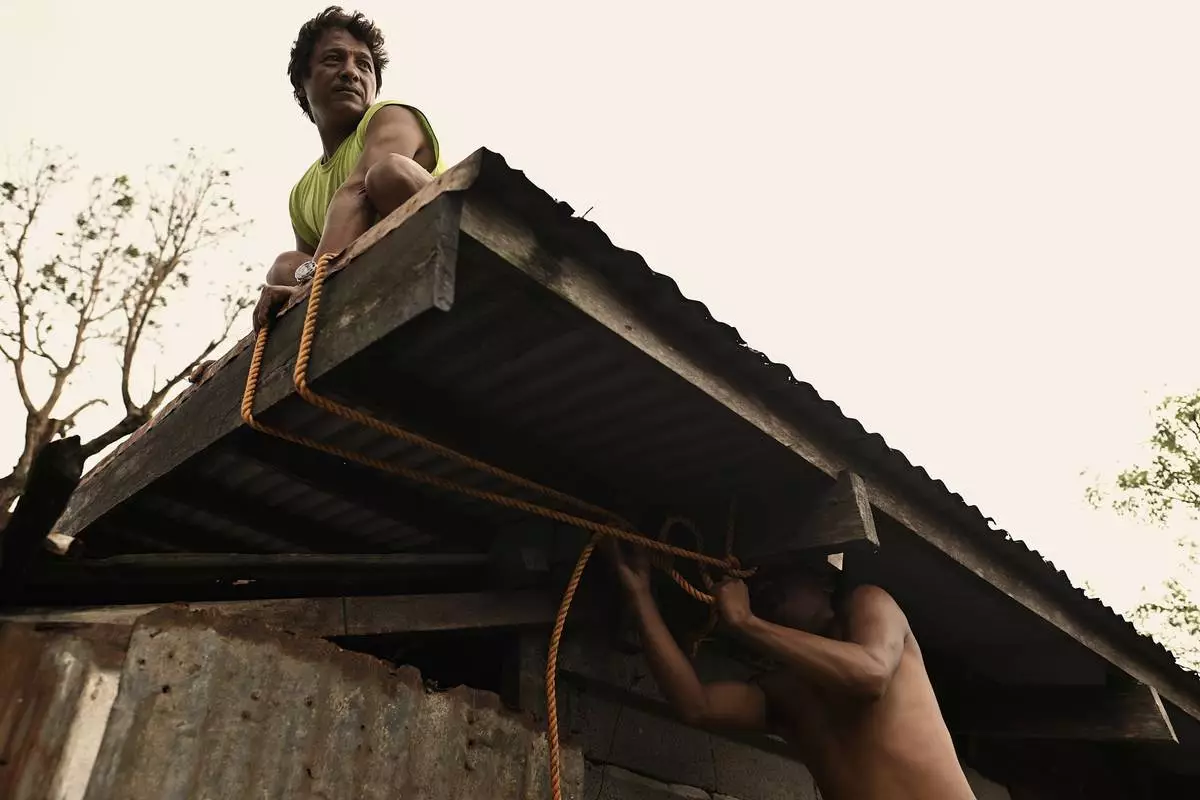
Residents reinforce the roof of their house in Santa Ana, Cagayan Province, northern Philippines as they anticipate Typhoon Usagi to hit their area Thursday, Nov. 14, 2024. (AP Photo/Noel Celis)

A resident reinforces the roof of their house in Santa Ana, Cagayan Province, northern Philippines as they anticipate Typhoon Usagi to hit their area Thursday, Nov. 14, 2024. (AP Photo/Noel Celis)

Residents receive relief goods at a school used as an evacuation center in Santa Ana, Cagayan province, northern Philippines as Typhoon Usagi approaches Thursday, Nov. 14, 2024. (AP Photo/Noel Celis)
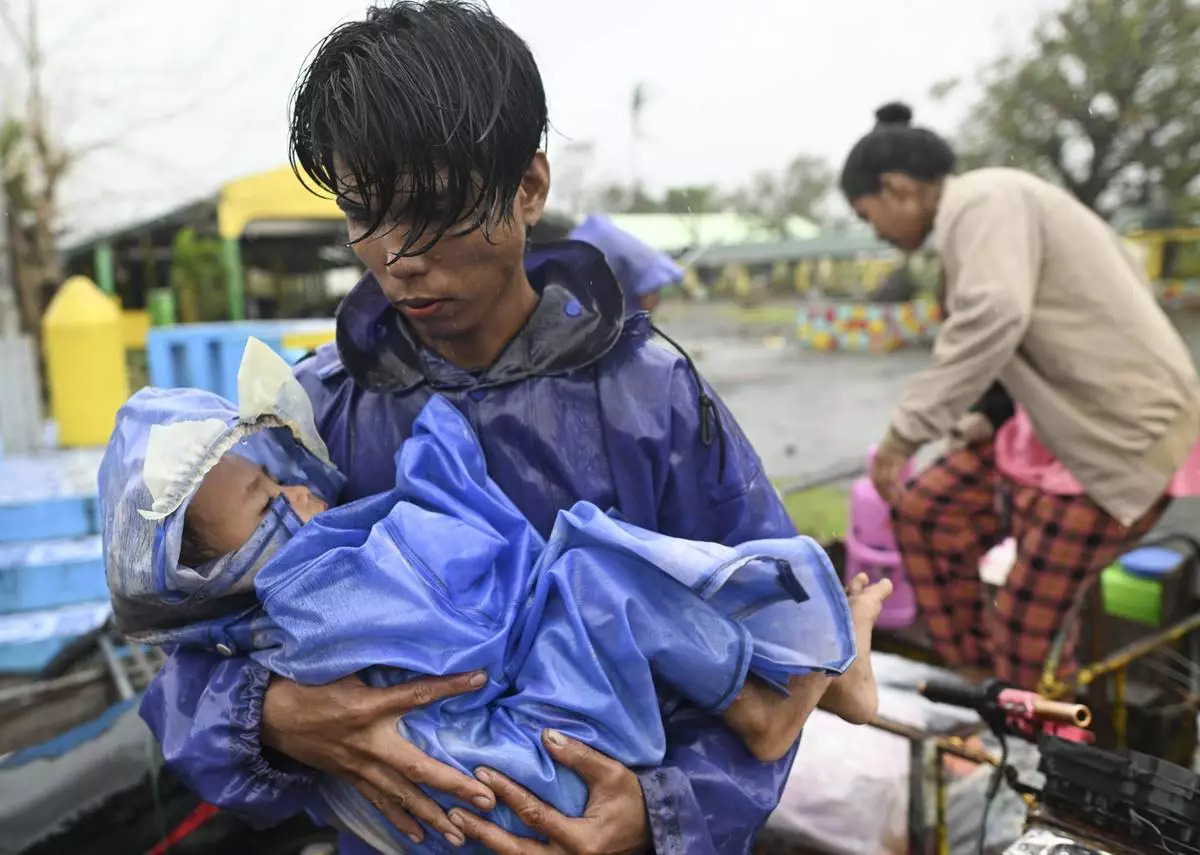
Residents arrive at a school used as a temporary evacuation center as they evacuate their homes at Santa Ana, Cagayan province, northern Philippines as Typhoon Usagi approaches Thursday, Nov. 14, 2024. (AP Photo/Noel Celis)

Residents of Santa Ana, Cagayan province, northern Philippines arrive at a school used a temporary evacuation center as Typhoon Usagi approaches Thursday, Nov. 14, 2024. (AP Photo/Noel Celis)

A man carries belongings as they evacuate to safer grounds in Santa Ana, Cagayan province, northern Philippines as Typhoon Usagi approaches Thursday Nov. 14, 2024. (AP Photo/Noel Celis)
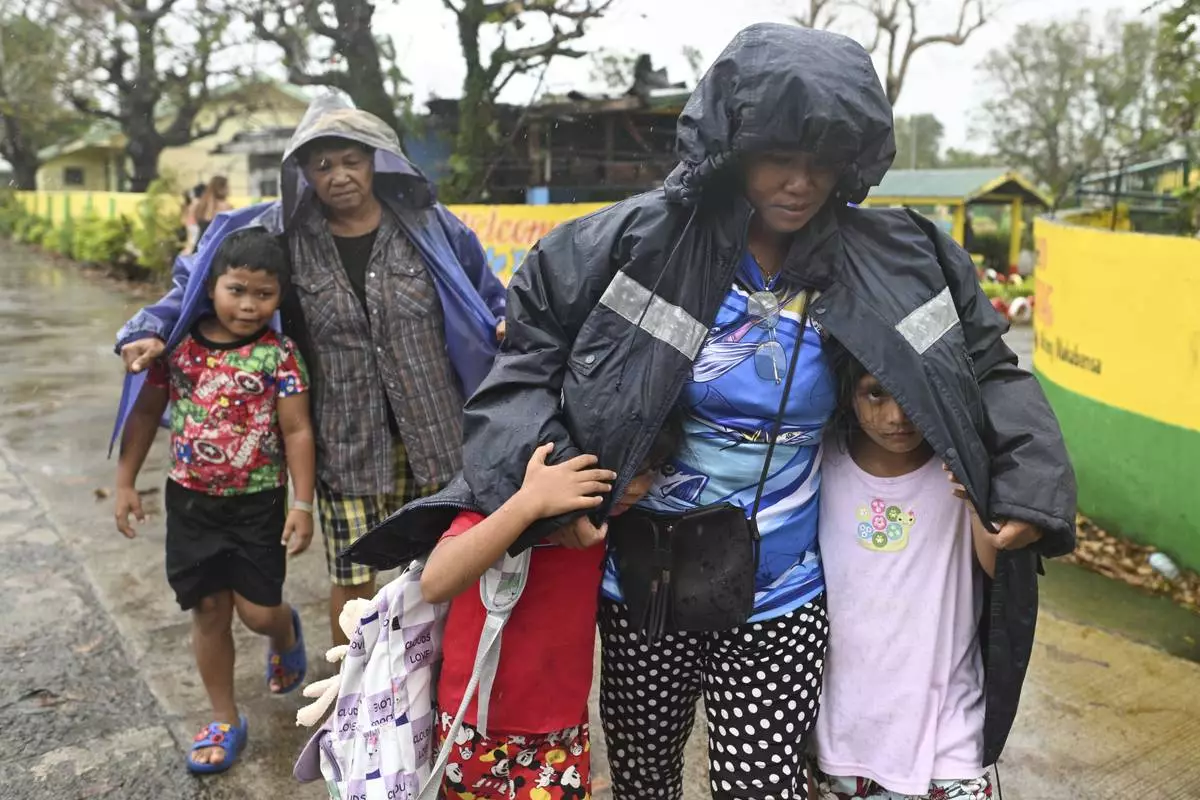
Residents use jackets to protect them from rain as they evacuate their homes in Santa Ana, Cagayan province, northern Philippines as Typhoon Usagi approaches Thursday, Nov. 14, 2024. (AP Photo/Noel Celis)

A resident reinforces his roof in Santa Ana, Cagayan Province, northern Philippines as they anticipate Typhoon Usagi to hit their area Thursday, Nov. 14, 2024. (AP Photo/Noel Celis)

A resident reinforces his roof in Santa Ana, Cagayan Province, northern Philippines as they anticipate Typhoon Usagi to hit their area Thursday, Nov. 14, 2024. (AP Photo/Noel Celis)
BAKU, Azerbaijan (AP) — For the third straight year, efforts to fight climate change haven't lowered projections for how hot the world is likely to get — even as countries gather for another round of talks to curb warming, according to an analysis Thursday.
At the United Nations climate talks, hosted in Baku, Azerbaijan, nations are trying to set new targets to cut emissions of heat-trapping gases and figure out how much rich nations will pay to help the world with that task.
But Earth remains on a path to be 2.7 degrees Celsius (4.9 degrees Fahrenheit) warmer than pre-industrial times, according to Climate Action Tracker, a group of scientists and analysts who study government policies and translate that into projections of warming. Recent developments in China and the United States are likely to slightly worsen the outlook.
If emissions are still rising and temperature projections are no longer dropping, people should wonder if the United Nations climate negotiations — known as COP — are doing any good, said Climate Analytics CEO Bill Hare.
“There’s an awful lot going on that’s positive here, but on the big picture of actually getting stuff done to reduce emissions ... to me it feels broken,” Hare said.
The world has already warmed 1.3 degrees Celsius (2.3 Fahrenheit) above pre-industrial times. That's near the 1.5-degree (2.7 F) limit that countries agreed to at 2015 climate talks in Paris. Climate scientists say the atmospheric warming, mainly from human burning of fossil fuels, is causing ever more extreme and damaging weather including droughts, flooding and dangerous heat.
Climate Action Tracker does projections under several different scenarios, and in some cases, those are going up slightly.
One projected track based on what countries promise to do by 2030 is up to 2.6 degrees Celsius, a tenth of a degree warmer than before. And even the analysts' most optimistic scenario, which assumes that countries all deliver on their promises and targets, is at 1.9 Celsius, also up a tenth of a degree from last year, said study lead author Sofia Gonzales-Zuniga of Climate Analytics, one of the main groups behind the tracker.
“This is driven highly by China,” Gonzales-Zuniga said. Even though China's fast-rising emissions are starting to plateau, they are peaking higher than anticipated, she said.
Another upcoming factor not yet in the calculations is the U.S. elections. A Trump administration that rolls back the climate policies in the Inflation Reduction Act, and carries out the conservative blueprint Project 2025, would add 0.04 degree Celsius (0.07 Fahrenheit) to warming projections, Gonzales-Zuniga said. That's not much, but it could be more if other nations use it as an excuse to do less, she said. And a reduction in American financial aid could also reverberate even more in future temperature outlooks.
“For the U.S. it is going backwards,” said Hare. At least China has more of an optimistic future with a potential giant plunge in future emissions, he said.
“We should already be seeing (global) emissions going down" and they are not, Hare said. “In the face of all of the climate disasters we’ve observed, whether it’s the massive floods in Nepal that killed hundreds of people or whether it’s the floods in Valencia, Spain, that just killed hundreds of people. The political system, politicians are not reacting. And I think that’s something that people everywhere should be worried about.”
The major battle in Baku is over how much rich nations will help poor countries to decarbonize their energy systems, cope with future harms of climate change and pay for damage from warming's extreme weather. The old goal of $100 billion a year in aid is expiring and Baku's main focus is coming up with a new, bigger figure.
A special independent group of experts commissioned by United Nations Secretary-General Antonio Guterres issued its own estimate of costs and finances on Thursday, calling for a tripling of the old commitment.
“Advanced economies need to demonstrate a credible commitment” to helping poor nations, the report said.
A coalition of poor nations at the Baku talks are asking for $1.3 trillion in annual climate finance. The independent experts' report said about $1 trillion a year is needed by developing nations from all outside sources, not just government grants.
Negotiators are still working out how much money will be on the table for the final deal, but indications late Wednesday suggested many options were still on the table.
The report detailed how expensive decarbonizing the world's economy would be, how much it would cost and where the money could come from. Overall climate adaption spending for all countries is projected to reach $2.4 trillion a year.
It’s personal for many activists from the countries experiencing the worst and most immediate impacts of climate change, like Sandra Leticia Guzman Luna, who is from Mexico and is the director of the climate finance group for Latin America and the Caribbean. “We are observing the climate impacts causing a lot of costs, not only economic costs but also human losses,” she said.
“I’m from one of the countries that needs to pay up and is historically responsible,” said Bianca Castro, a climate activist from Portugal. “Year after year, we come to COP and we are heartbroken with what doesn’t happen but we know needs to happen.”
The Associated Press’ climate and environmental coverage receives financial support from multiple private foundations. AP is solely responsible for all content. Find AP’s standards for working with philanthropies, a list of supporters and funded coverage areas at AP.org.
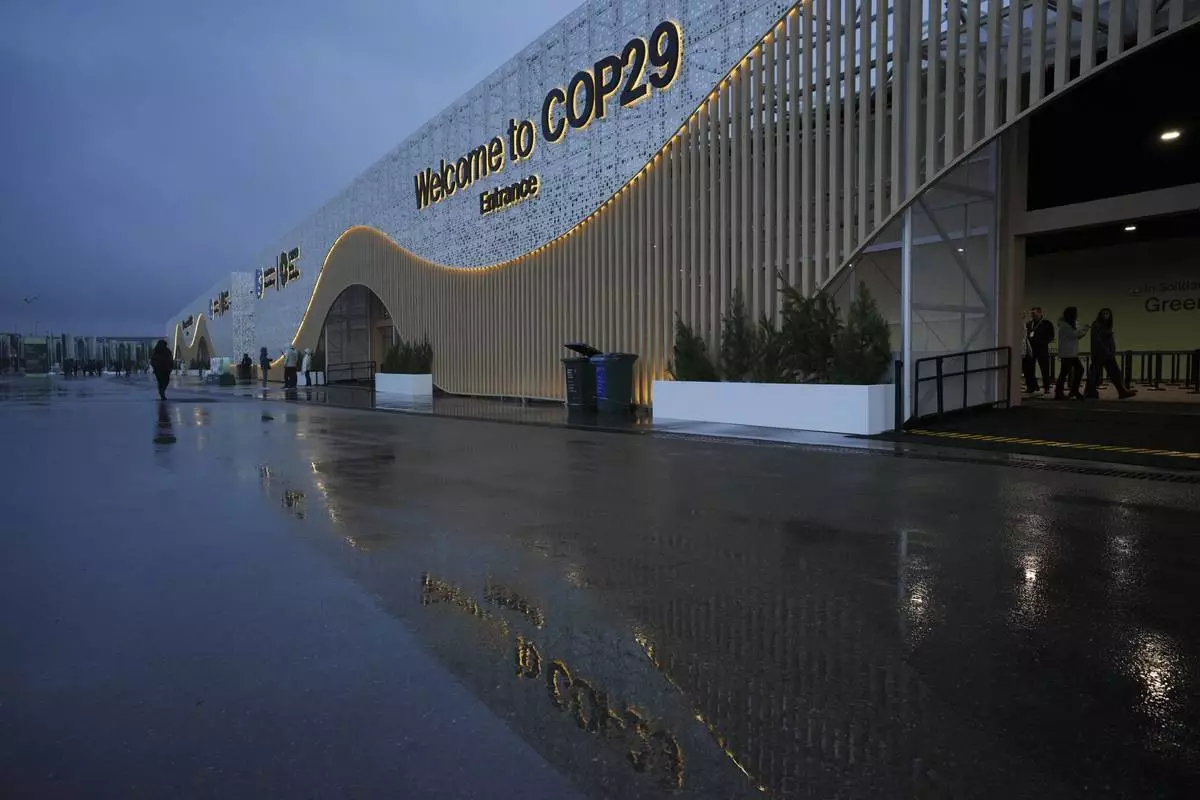
Attendees arrive for the day at the COP29 U.N. Climate Summit, Thursday, Nov. 14, 2024, in Baku, Azerbaijan. (AP Photo/Peter Dejong)

Activists participate in a demonstration calling for climate finance during the COP29 U.N. Climate Summit, Thursday, Nov. 14, 2024, in Baku, Azerbaijan. (AP Photo/Peter Dejong)

Activists with signs spell out "pay up" for climate finance in the Baku Olympic Stadium during the COP29 U.N. Climate Summit, Thursday, Nov. 14, 2024, in Baku, Azerbaijan. (AP Photo/Sergei Grits)
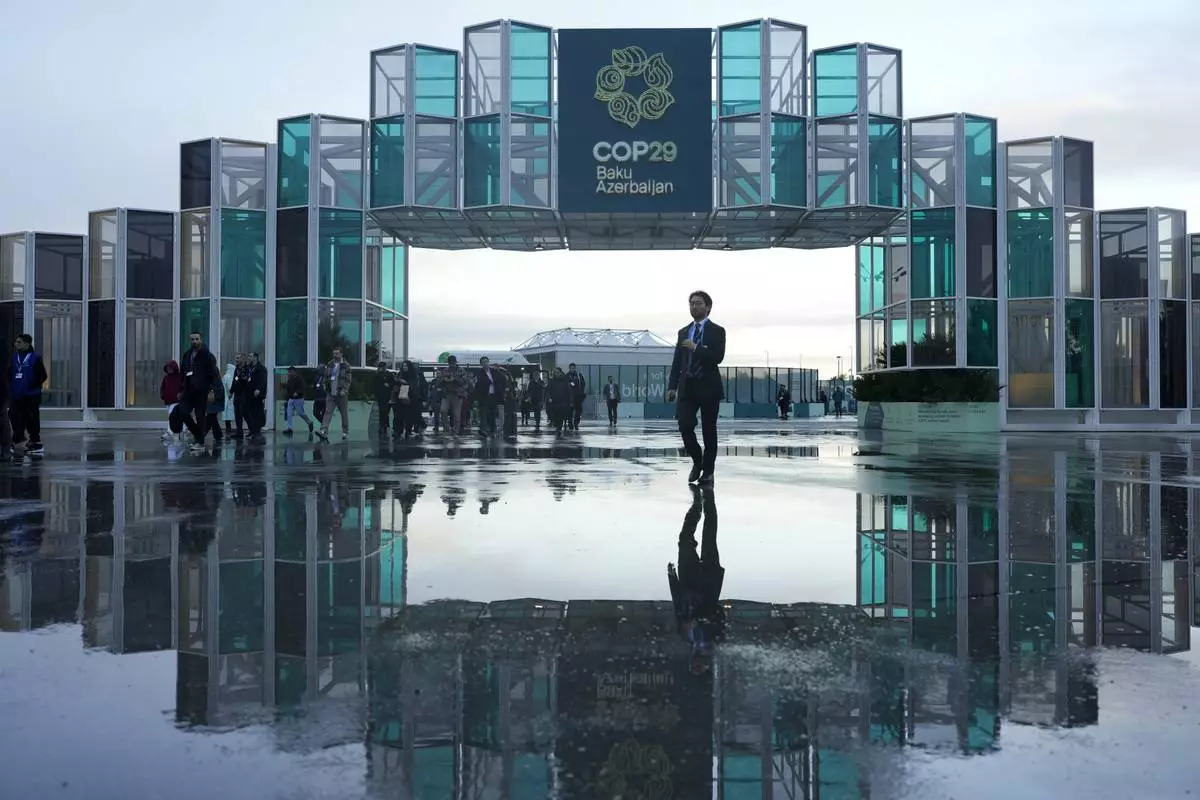
Attendees arrive for the day at the COP29 U.N. Climate Summit, Thursday, Nov. 14, 2024, in Baku, Azerbaijan. (AP Photo/Rafiq Maqbool)
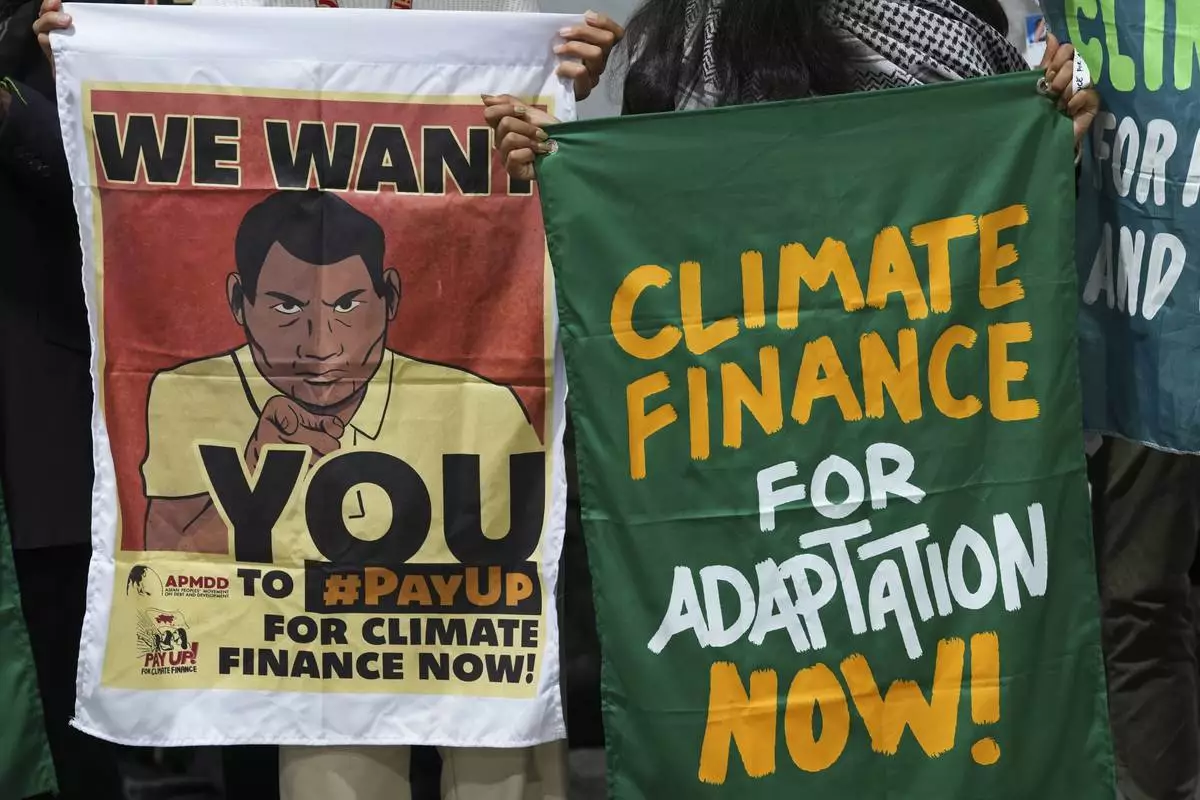
Activists participate in a demonstration for climate finance at the COP29 U.N. Climate Summit, Thursday, Nov. 14, 2024, in Baku, Azerbaijan. (AP Photo/Peter Dejong)














